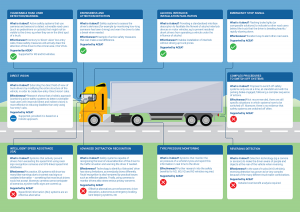Cars, vans, trucks, and buses will have to be equipped with advanced safety features. Vulnerable road users, such as cyclists and pedestrians, to be better protected; 25.300 people died on EU roads in 2017 and 135.000 were seriously injured.
In a drive to reduce the number of fatalities and injuries on EU roads, Internal Market Committee MEPs approved a set of rules to make several advanced safety features standard equipment in different categories of vehicles sold in the EU market. Safety features such as intelligent speed assistance, advanced emergency-braking system, and emergency stop signal will have to be installed in new vehicles. The proposal adapts the current rules to the changes in mobility behavior resulting from societal trends (e.g. more cyclists and pedestrians, an aging society) and technological developments.
Trucks must be designed and built to make vulnerable road users, such as cyclists and pedestrians, more visible to the driver (so-called “direct vision”). According to MEPs, “this requirement shall remove the blind spots in front of the driver’s seat and significantly reduce the blind spots through the side windows”. Specificities of different types of vehicles must be taken into account, they add. Manufacturers must ensure that these systems and features are developed in such a way so as to ensure that users accept them and that motor vehicles’ user instructions contain clear and comprehensive information on how they function MEPs stress. The Internal Market Committee also included requirements to protect vehicles against cyber attacks.
MEPs amended the proposal to make sure that accident data recorders operate on a “closed-loop system”, whereby the data stored is overwritten, and which does not allow the vehicle or driver to be identified (data collected will be anonymized).
As this fact sheet shows, the European Automobile Manufacturers’ Association (ACEA) supports a wide array of the safety measures proposed by the Commission.
Picture: ACEA

